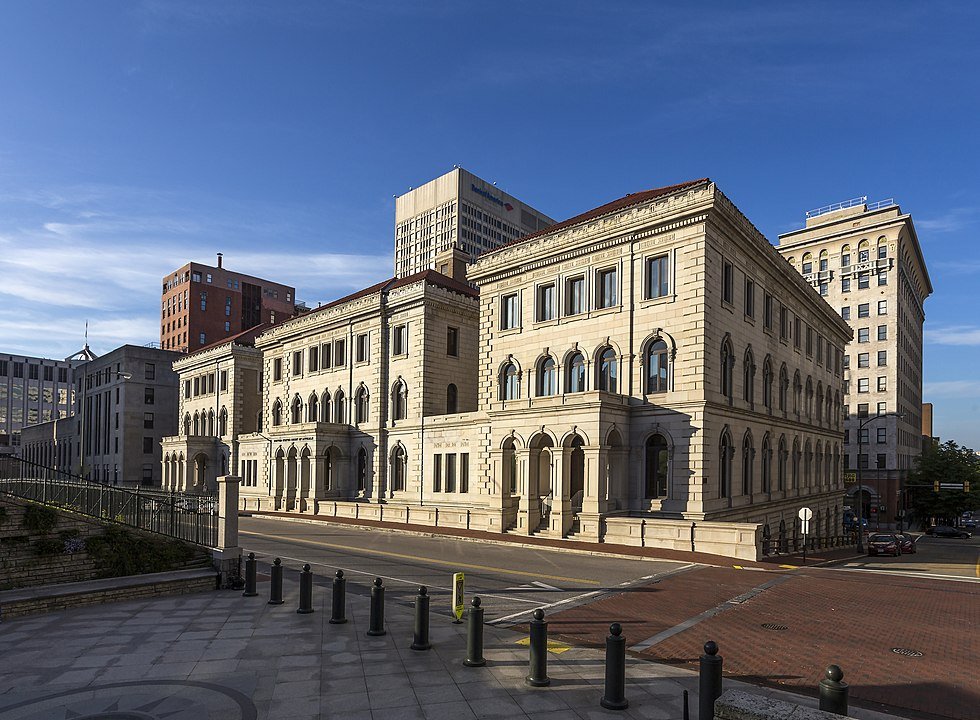Appeals
Judges do not just get to arbitrarily decide the outcome of cases; they need to follow the law. And if they do not, their decisions may be overturned in an appeal. But appeals are not automatic, and they may not address every aspect of a trial court’s decision. Instead, appeals require work, strategy, and the application of complicated rules.
Why should you read this post about appeals?
You are curious about the American legal system’s complex procedure for appeals.
You hope this blog post reverses some of the dumb things I wrote in an earlier post.
There are a lot of appeals in the news and you’d like a bit of insight that may only come from a litigation blog.
Image credit: https://en.wikipedia.org/wiki/United_States_Court_of_Appeals_for_the_Fourth_Circuit#/media/File:Richmond_Federal_Appeals_Court_and_skyline_VA2.jpg
Issues That Can Be Appealed
Specific rules govern what can be the subject of an appeal. Generally, an order of a court can be appealed. For example, New York’s CPLR 5501 states that an appeal can arise from, among other things a “final judgment” or an “order which necessarily affects the final judgment.”
In New York, jury verdicts are generally not the subject of appeals. Instead, after a jury verdict, lawyers make a motion for the judge to throw out the verdict and, if the judge refuses to do so, the lawyer may appeal from the denial of that motion.
The general requirement for appeals to arise from orders places a burden on movants to raise their issues with the trial court first before going straight to the appeals court.
The Work That Goes Into an Appeal
One of the first things that an appellant needs to do is to ensure that her issue has been preserved for appeal. This usually means raising the issue at the trial court level and ensuring that there is a record (such as a transcript or a written order) reflecting the court’s adverse decision.
Next, the appellant needs to file a notice of appeal. A notice of appeal is usually a short document that identifies the order from which the appellant appeals. Although an appellant needs to file this document shortly after the adverse order, rules like CPLR 5501 permit the appellant to wait until the final judgment in a case to make one big appeal instead of seeking “interlocutory” appeals while a case is still pending.
The appellant has to make sure her counsel is admitted to the court where the appeal will be heard, which may be a different court than the trial court. In New York, the Appellate Division and the trial courts are both part of the same court system. But in federal court, the District Courts are separate from the Courts of Appeals and require a separate admissions process.
In addition to drafting a brief, explaining why the appeal should be granted, the appellant also needs to compile a “record,” which contains copies of the documents that the parties submitted to the trial court and that the trial court issued. For appeals arising from a trial, the record could be voluminous since it may include trial exhibits.
Unlike in the trial court, where both sides can usually just make PDFs of a Word document to submit briefs to court, it is common for litigants in appellate litigation to need the services of a professional appellate printer. I use Record Press, largely because another prominent appellate printer was rude to me during our work together. The printer takes your documents and formats them and submits them, following the unnecessarily complicated rules of the appeals court.
After the briefs and record are submitted, the court may hold an oral argument. The process of litigating an appeal may take months, and the decision may not come for months after that.
High Court Appeals
Many commercial disputes are litigated at the trial court and to an appeals court. Appeals in general can be expensive, but sometimes not as expensive as accepting an adverse decision that may have been decided incorrectly.
A small fraction of commercial disputes are litigated beyond one appeal. But if a litigant does not like the result from an appeals court, they may go to the highest court in the state if there is one higher than the one to which they appealed. And, if they do not like the decision of a federal appeals court or the highest court in a state, then they can appeal to the U.S. Supreme Court.
But the Supreme Court, and various state supreme courts, do not take every appeal that presents itself. Instead, appellants need to ask the court permission to make the appeal. In the Supreme Court, that application is called a petition for a writ of certiorari. In New York, it is seeking leave to appeal. Very few of these requests are granted, and they usually concern issues of great public importance or that arise from novel legal questions. As a result, most commercial disputes do not make it to this level of appeal.
But when commercial disputes do reach these high courts, they usually invite the high courts not just to correct errors in the lower court’s application of the law, but also to change what the law is or make a new law since the high courts have the power to do so. As a result, non-parties to a case may submit amicus curiae briefs, explaining to the court why it should decide a certain way from the perspective of non-parties who may be affected by the decision.
